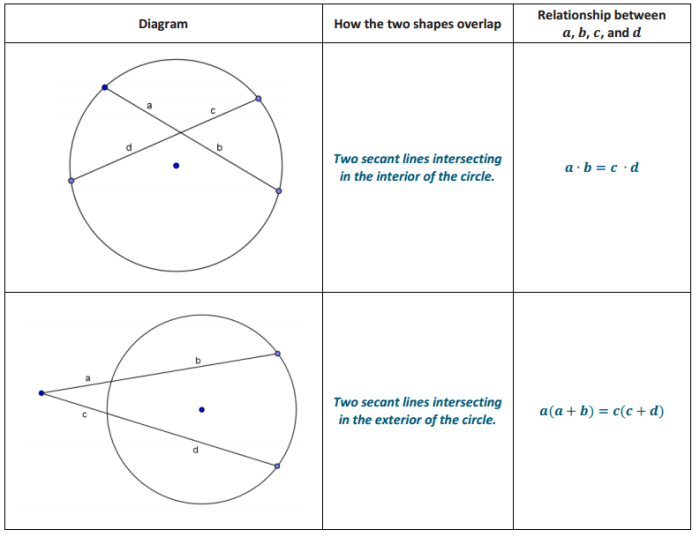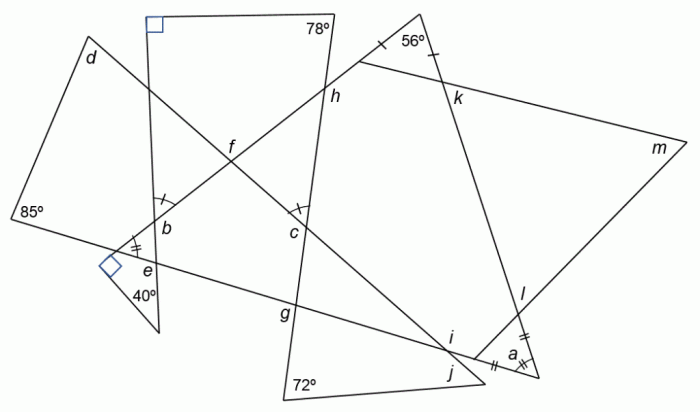Geometry for enjoyment and challenge answer key – Embark on a captivating journey into the realm of geometry with our comprehensive answer key, unlocking the secrets and challenges that lie within this intriguing subject. Discover the intrinsic beauty and fascination of geometry, as it unveils its power to foster logical thinking, problem-solving prowess, and practical applications that shape our world.
Delving deeper, we unravel the fundamental concepts and theorems that form the backbone of geometry, providing a structured understanding of its intricate relationships and properties. Our step-by-step methods empower you to conquer geometry problems with confidence, equipping you with the strategies and techniques to tackle even the most complex challenges.
Understanding Geometry as a Subject for Enjoyment and Challenge: Geometry For Enjoyment And Challenge Answer Key

Geometry, the study of shapes, sizes, and spatial relationships, offers a captivating blend of beauty, challenge, and practical applications. Its intrinsic allure stems from the harmonious patterns and elegant theorems that govern the world around us.
Beyond its aesthetic appeal, geometry fosters logical thinking and problem-solving skills. By analyzing geometric figures and relationships, students develop deductive reasoning abilities, spatial visualization skills, and the ability to solve complex problems in a systematic and logical manner.
Examples of Real-World Applications of Geometry
- Architecture: Geometric principles guide the design of buildings, bridges, and other structures, ensuring stability, efficiency, and aesthetic appeal.
- Engineering: Geometry plays a crucial role in designing machines, vehicles, and infrastructure, ensuring optimal performance and safety.
- Art: Geometric shapes and patterns are fundamental elements in visual arts, creating balance, harmony, and visual interest.
Key Concepts and Theorems in Geometry
Geometry encompasses a vast array of fundamental concepts and theorems that form the foundation of the subject. These include:
Concepts
- Points, lines, planes, and angles
- Triangles, quadrilaterals, circles, and other geometric shapes
- Congruence and similarity
- Area, perimeter, and volume
Theorems
- Pythagorean Theorem
- Triangle Inequality Theorem
- Angle Bisector Theorem
- Midsegment Theorem
These concepts and theorems provide the building blocks for understanding geometry and solving geometric problems.
Methods for Solving Geometry Problems

Geometry problems require a systematic approach and the application of appropriate strategies and techniques. Common methods include:
Diagrams and Figures
Creating accurate diagrams or figures helps visualize the problem and identify relevant geometric relationships.
Logical Reasoning
Applying logical reasoning and deductive arguments to draw conclusions and solve problems.
Properties of Shapes
Understanding the properties of different geometric shapes, such as their angles, sides, and area, can simplify problem-solving.
Similarity and Congruence
Recognizing similarities and congruencies between geometric figures can lead to efficient solutions.
Algebraic Methods
Incorporating algebraic equations and formulas to solve for unknown values or relationships.
Applications of Geometry in Different Fields
Geometry finds practical applications in various fields, including:
Architecture
Geometric principles guide the design and construction of buildings, bridges, and other structures, ensuring stability, efficiency, and aesthetic appeal.
Engineering
Geometry plays a crucial role in designing machines, vehicles, and infrastructure, ensuring optimal performance and safety.
Art
Geometric shapes and patterns are fundamental elements in visual arts, creating balance, harmony, and visual interest.
Historical Contributions to Geometry
Geometry has a rich history dating back to ancient civilizations. Notable contributions include:
Ancient Greece
- Euclid’s Elements: A foundational work that systematized geometry and introduced axioms and theorems.
- Pythagoras: Known for the Pythagorean Theorem and contributions to number theory.
Renaissance and Enlightenment
- René Descartes: Developed analytic geometry, linking algebra and geometry.
- Leonhard Euler: Made significant contributions to topology and graph theory.
Modern Era
- Bernhard Riemann: Introduced the concept of curved surfaces and non-Euclidean geometry.
- David Hilbert: Developed axiomatic foundations for geometry.
Resources for Learning and Practicing Geometry

Various resources are available for learning and practicing geometry:
Textbooks
- Geometry for Enjoyment and Challenge by Richard Rhoad
- Geometry: Concepts and Applications by Harold Jacobs
Online Courses
- Geometry MOOC by Stanford Online
- Geometry X by edX
Clubs and Competitions, Geometry for enjoyment and challenge answer key
- Math Club
- Geometry Bee
FAQ Corner
What are the key benefits of studying geometry?
Geometry enhances logical thinking, problem-solving skills, and spatial reasoning, which are essential in various fields and everyday life.
How can I effectively practice geometry?
Regular practice, utilizing diverse problem-solving methods, and engaging in geometry competitions can significantly improve your proficiency.
What are some real-world applications of geometry?
Geometry finds applications in architecture, engineering, art, computer graphics, and many other fields, where it guides design, construction, and problem-solving.
